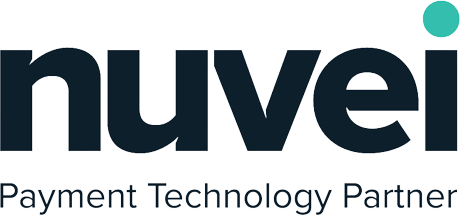Content Delivery Network (CDN)
Seize the potential.
Save the Trouble.

-
Exclusive Features
Access vendor betas which can simplify highly complex use cases. Outperform competition, and yourself, with exclusively-developed vendor features & expert configurations.
-
No Lock-In
Our 17-year experience & diverse portfolio enables us to seamlessly manage CDN migrations, CSP integrations, and complex multi-CDN strategies.
-
No Loose Ends
Lay back with automated, API-based integration of your CDN into your ecosystem, while utilizing an utmost 100% of your plan’s capabilities, delivered by elite DevOps & FinOps experts.
-
Maximum Security
Leverage our web & cloud security portfolio to get the most accurate, cutting-edge choice & configuration of CDN security solutions inaccessible to CDN vendors.
How to Choose the Right CDN for Online Video Delivery
The right CDN partner can help you meet the digital expectations of today and tomorrow.
Use this short, effective chart guide to get acquainted with the current video delivery trends and the CDN requirements they generate.

Go Beyond Legacy Solutions
We at GlobalDots hunt for the most cutting edge and relevant technologies out there.
Once tested and found qualified we bring you the most certified innovative products out there for every pressing use case.

-
What does CDN stand for?
A Content Delivery Network is a distributed network of servers strategically located across multiple geographical regions. Its primary function is to deliver web content—such as images, videos, HTML pages, JS and CSS files —efficiently and reliably to end users. By caching content closer to users, a CDN reduces latency, accelerates load times, and optimizes the overall user experience.
-
What is the main benefit of a Content Delivery Network?
The main benefit of a Content Delivery Network (CDN) is to improve the performance and reliability of web content delivery by reducing latency and distributing server load across a globally distributed network of edge servers.
- Performance Optimization:
- CDNs cache content at edge servers geographically closer to users. This reduces latency by minimizing the distance data must travel from the server to the user.
- Faster load times not only enhance user experience but also improve SEO rankings and conversion rates for businesses.
- Scalability:
- By distributing traffic across multiple servers, CDNs ensure that applications remain accessible during traffic spikes or large-scale events. They offload requests from the origin server, reducing the risk of bottlenecks.
- Enhanced Reliability:
- CDNs provide redundancy by dynamically rerouting requests to operational servers in the event of server failure or connectivity issues. This makes the delivery of content more resilient and ensures high availability.
- Security at Scale:
- CDNs come equipped with edge security features, such as:
- DDoS mitigation: Absorbing malicious traffic at the edge.
- Web Application Firewall (WAF): Blocking malicious web requests.
- TLS Encryption: Ensuring secure communication between clients and servers.
- CDNs come equipped with edge security features, such as:
- Reduced Origin Server Load:
- By serving cached content directly from edge servers, CDNs dramatically reduce the number of requests that hit the origin server. This not only improves origin server performance but also decreases hosting costs.
- Performance Optimization:
-
What is the difference between CDN and cloud CDN?
The terms CDN and Cloud CDN are often used interchangeably, but there are key distinctions in how they are implemented and the context in which they are used. A CDN is a distributed network of servers designed to cache and deliver content closer to end users. These servers can be provided by traditional CDN providers or self-hosted solutions. It could be run on dedicated infrastructure or virtualized environments. A Cloud CDN is a CDN service integrated into a cloud provider’s ecosystem (e.g., Google Cloud CDN, AWS CloudFront, Azure CDN). It leverages the cloud provider’s global infrastructure and integrates seamlessly with their other cloud services. It offers less customization compared to traditional CDNs but excels in ease of use, scalability, and cost-effectiveness for cloud-native applications.
The choice between them depends on the organization’s architecture, security needs, and operational preferences.
-
What is the difference between API gateway and CDN?
An API Gateway and a CDN (Content Delivery Network) are both critical components of modern application architectures, but they serve distinct purposes and operate at different layers of the infrastructure stack. An API Gateway is a centralized point for managing, routing, and securing API requests in a microservices or distributed architecture. A CDN is a globally distributed network of servers designed to cache and deliver static content and reduce latency for users accessing web applications. While they serve different purposes, API Gateways and CDNs are complementary:
- CDN: Handles caching and delivery of static assets like documentation, CSS, and images.
- API Gateway: Manages dynamic API calls, like fetching user data or triggering backend actions.
For example, a modern web application might use a CDN to serve images and scripts while routing API calls through an API Gateway for authentication and backend communication. So, use a CDN when your primary goal is to optimize static content delivery, reduce latency, and absorb DDoS attacks. Use an API Gateway when your focus is on API management, including routing, security, and traffic control.
-
Is CDN important for SEO?
Definitely , a CDN (Content Delivery Network) is very important for SEO (Search Engine Optimization). While search engines like Google primarily focus on content relevance and quality, the technical performance of a website—which a CDN significantly enhances—plays a crucial role in determining SEO rankings. A CDN directly impact SEO working on the following metrics:
- Page Load Time: Reduces latency by caching and delivering assets closer to users.
- Bounce Rate: Faster sites reduce bounce rates, signaling better user engagement to search engines.
- Core Web Vitals: Optimizes LCP, FID, and CLS through fast and efficient content delivery.
- HTTPS Encryption: Provides easy HTTPS adoption, which is a ranking signal for several search engines
- Global Reach: Ensures fast load times for users in different regions, improving global SEO rankings.
The best practices for leveraging CDNs for SEO are:
- Enable Compression: Use gzip or Brotli compression to reduce asset sizes.
- Optimize Caching: Set appropriate caching policies to maximize performance.
- Use HTTP/2 or HTTP/3: Many CDNs support these protocols, which improve connection speeds.
- Leverage Image Optimization: Use CDN features to serve WebP or similarly optimized formats.
- Monitor Core Web Vitals: Regularly track metrics to ensure the CDN is configured for maximum SEO benefit.
-
Are CDNs GDPR compliant?
CDNs (Content Delivery Networks) can be GDPR compliant, but compliance depends on how the CDN is configured and used, as well as the practices of the CDN provider. Businesses using CDNs must evaluate their providers carefully, ensure DPAs (Data Processing Agreement) are in place, and align their own practices with GDPR requirements. The General Data Protection Regulation (GDPR) governs how personal data of EU citizens is handled, and CDNs must adhere to its principles when processing such data. CDNs should only process the data necessary to deliver their services. For example:
- Caching static assets like images, scripts, and stylesheets typically involves no personal data.
- When handling dynamic content or API responses, ensure that no excessive or unnecessary personal data is included in requests.
GDPR emphasizes the importance of protecting personal data. Many CDNs provide security features that align with these requirements:
- DDoS protection and Web Application Firewall (WAF) to prevent breaches.
- Encryption for data in transit.
- Logs and monitoring to detect and respond to security incidents.
-
Are there any advantages of using CDN for more than caching?
Yes, CDN can help with various types of content: caching static content like images, CSS, JS objects, accelerating dynamic, non-cacheable personalized transactions, streaming live and on-demand video content and even delivering telemetry or API-based traffic in high frequency of requests.
-
Can CDN help reduce my overall infrastructure cost?
Yes, one of the main benefits of CDN is offloading your server infrastructure, whether in the Cloud or on-premises. Counterintuitively, in some use cases, adding CDN to the website might reduce the overall spend on infrastructure, as CDN uses optimizations in connection and protocol handling.
-
What type of security capabilities CDNs have to offer?
In additions to the basic end-to-end HTTPS/TLS data encryption, CDNs offer multiple security capabilities: from Cloud/Edge-based DDoS protection and WAF through Bot Management to API and 3rd party client-side security.















